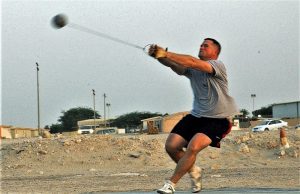Pole vault
Pole vault is an incredible sport to watch and worthy of admiration by lovers of physical sport. The technique can become so fluid and elegant that it is the result of a well-studied technique designed to optimize energy conversion during the jump.
What is pole vault?
Pole vault is a fluid and elegant sport that involves running on a track at a certain distance to reach the point where a pole is placed in the ground box to try to jump the highest possible distance.
About pole vault
Competitors must jump on a horizontal bar that measures 4.5 meters in length by running along a track and placing a pole against a holding area at the back of a box centrally located at the base of the ground. All competitors have three attempts to jump, although they also have the option to jump one turn and try a higher height. Three consecutive failures at the same height or many combinations of heights cause the competitor to be eliminated.
Pole vault history
This discipline dates back to the Cretan, Celtic and Dutch populations. The horizontal jumps were the first to be incorporated into the sport and the first competitions of the nineteenth century were made with long jumps with pole vaults. In 1850, the English gave the jump a vertical position and in that year, began to perform in impulse jumping. At the beginning of the sport, a very heavy pole was used, with more than 10 kilograms, but then the material evolved and was changed for bamboo in 1905.
Technique
Pole vault consists of trying to reach the highest possible height with the help of a pole which rests in a box at the end of an impulse race. At the end of the last century, the pole vault was practiced with poles made of different types of wood, such as spruce, ash or chestnut. The need to increase the lever in order to achieve greater jumps, led to the construction of poles made of different materials, mainly fiberglass.
Pole vault rules
Among the most important rules we can mention are the following:
- Athletes have three different attempts to overcome the height, which is increasing, according to the rules of the test.
- If there are three consecutive null jumps, the athlete will be disqualified.
- If the ribbon does not remain in the athlete’s supports during the jump, the athlete will be disqualified.
- After the take-off, if the athlete places the lower hand above the upper hand or if he moves towards the top of the pole, if he holds, stabilizes or repositions with his hand the strips during the jump will be eliminated.
- If the player has a delay during the execution of the attempt will be disqualified.
Pole vault phases
- Race phase: this is a progressive phase and in the last five strides is where maximum acceleration is achieved. At the beginning of the race, the pole is in a vertical position, the right hand is placed next to the right hip, and the left hand at chest height. The elbows should be attached to the body and the hands approximately 60 centimeters apart. The pole will have to descend gradually until reaching a shape parallel to the ground, as the athlete reaches the box.
- Whip phase: the whip foot is perpendicular to the grip hand, the arm will be stretched and when the jumper detaches from the ground, a flexion of the pole will be made.
- Roll-up phase: the jumper must have his back to the ground, the body takes different positions that will help him overcome the bar.
- Step phase of the ribbon: the hips are propelled up with the feet, making an impulse with the arms, then turns on the ribbon, being placed in suspension position. The left arm is fully extended, and the hand releases the pole.
Equipment
- The Box: this is the container constructed of a hard material to hold the end of the pole in order to achieve support in the jump development. It must be 1000 millimeters long inside and 600 millimeters wide at the top. The bottom of the box tilts from the level of the track to where it meets the top, which has a depth of 200 millimeters from the surface of the pavement.
- The pole: it can be of any material and it does not matter its length or its diameter, but its surface must be completely smooth, it can be covered by adhesive tape in the zone that belongs to the grip and in the inferior part.
- Jumpers: these are the vertical posts that are in charge of holding the crossbar or ribbon. Their shape and dimension are not under the regulations, but it is said that the jumper should be made of a rigid material.
- Cross bar or ribbon: is placed horizontally and indicates the height of the athlete should jump. It is made of fiberglass or some resistant material, but it cannot be made of metal. It has a length between 4.48 m and 4.52 m and a weight of 2.25 kilograms.
- Supports: they are attached to the jumpers and are circular in shape.
- Drop zone: is a rectangle at least 5 meters long and also 5 meters wide.
How to cite this article?
Briceño V., Gabriela. (2019). Pole vault. Recovered on 24 February, 2024, de Euston96: https://www.euston96.com/en/pole-vault/










